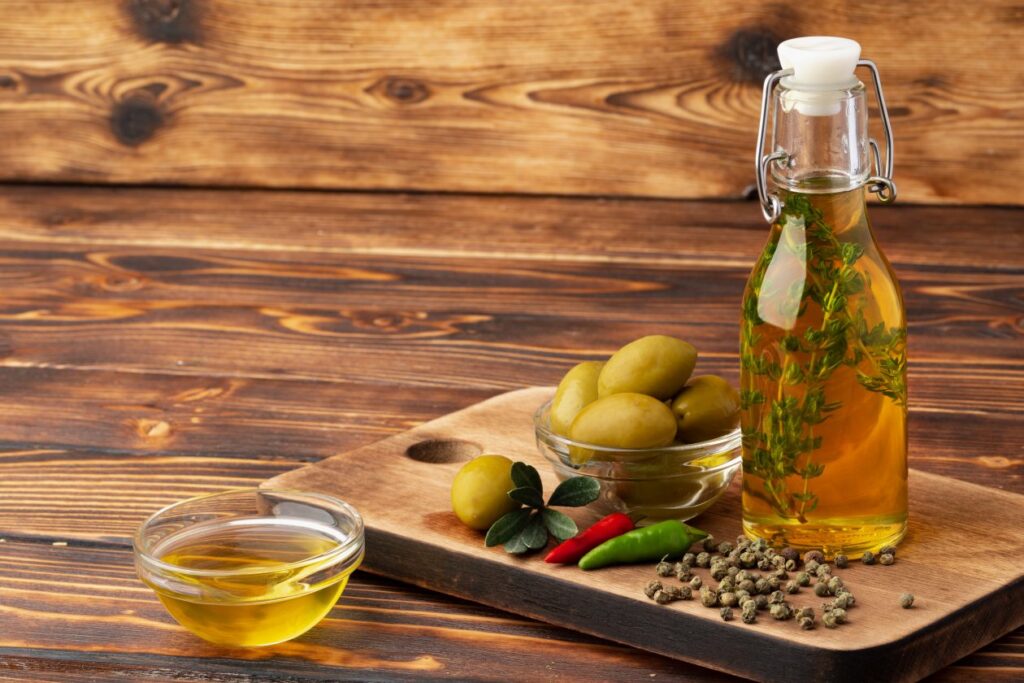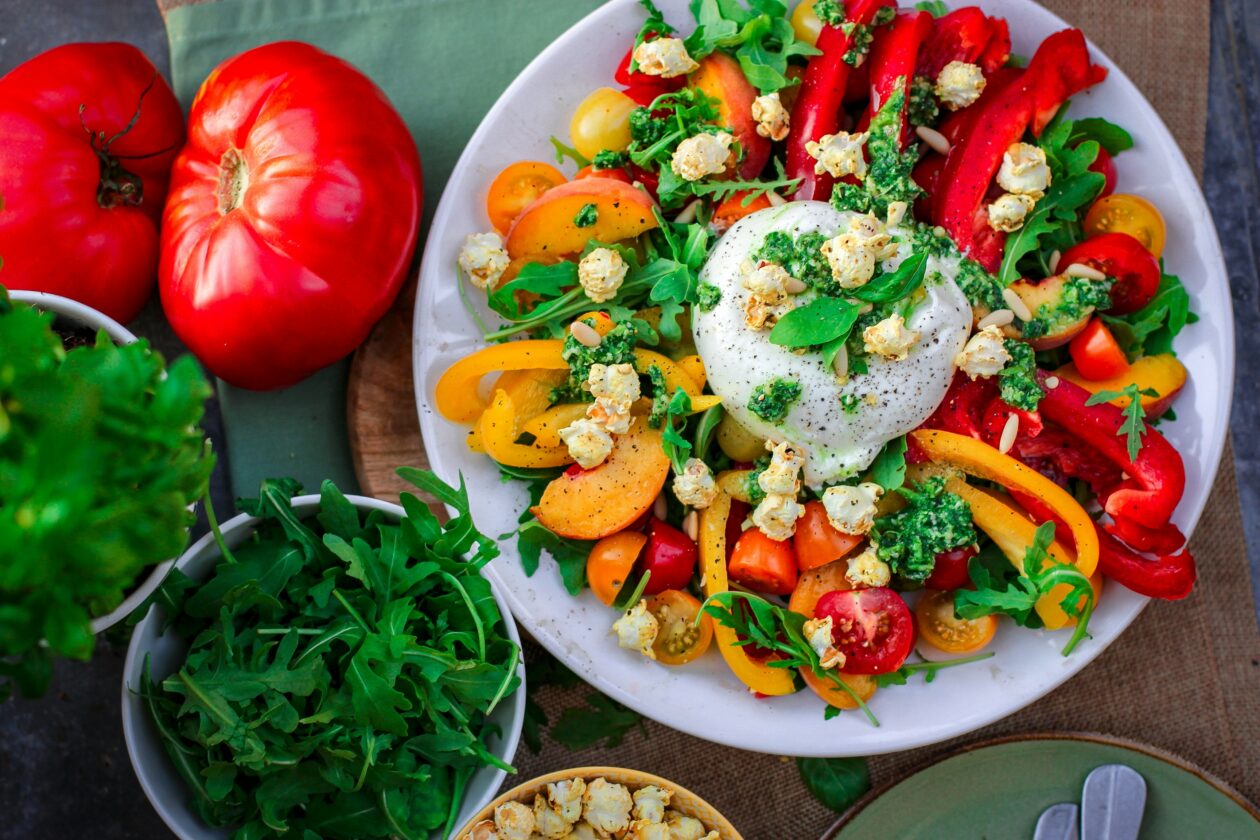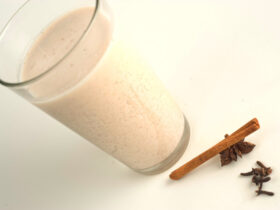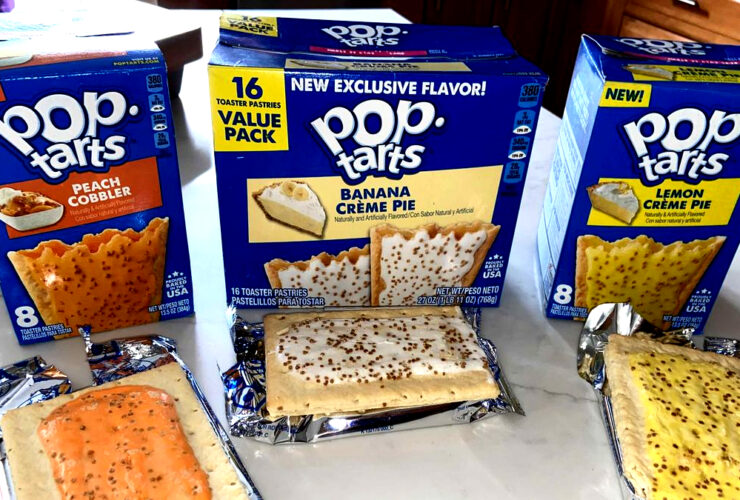Introduction
Every decision counts regarding weight loss, including the seemingly inconsequential selection of a salad dressing to drizzle over one’s vegetables. Even though salads are frequently recommended to lose weight, the vinaigrette you select can make or break your progress. This segment delves into the pivotal significance of salad dressings in the context of weight loss. It promotes the utilization of homemade dressings as a method of regulating ingredients and caloric intake.
Selecting the proper salad vinaigrette is crucial for individuals seeking to manage their weight effectively. Numerous store-bought dressings contain harmful fats, concealed sugars, and excessive sodium, which can thwart weight loss efforts. Individuals can exercise authority over the ingredients by preparing their dressings, guaranteeing that the final product corresponds to their dietary goals. Additionally, homemade condiments provide the opportunity to experiment with healthier alternatives to conventional ingredients, including heart-healthy oils and natural sweeteners.
Moreover, calorie management is improved when homemade dressings are utilized, as one considers the constituents. By creating their dressings, individuals can exercise portion control and measurement, thereby assisting them in adhering to their daily calorie objectives. This methodology enables individuals to exercise autonomy in determining their dietary preferences while indulging in delectable and gratifying salads. By adopting homemade dressings, individuals can advance their efforts to lose weight and adopt a proactive stance towards healthier dietary practices.
Salad Dressings and Weight Loss
Salad dressings are crucial components in the pursuit of weight loss, as the nutrients and calories they contain are directly influenced by the elements found in them. The prodigious calorie, fat, and sugar content of many store-bought salad condiments can negate the health benefits of salad consumption. Frequently, these condiments comprise concealed preservatives and additives, which contribute to excessive caloric intake and impede endeavors to lose weight.
On the other hand, homemade dressings provide a resolution by controlling the ingredients and serving proportions. Individuals can select healthier options by making dressings at home, including heart-healthy oils like olive oil and natural sweeteners such as honey or maple syrup. This enables individuals to formulate delectable condiments that augment the nutritional composition of their salads while maintaining their exquisite flavor.
The customization and control that homemade dressings offer surpass that of their store-bought counterparts. Individuals can customize the ingredients in condiments they prepare at home to align with their dietary preferences and objectives related to weight loss. This entails modifying the quantities of oil, sweeteners, and seasonings employed to achieve an optimal harmony of tastes and consistency.
Furthermore, using homemade dressings provides the chance to integrate nutrient-dense components, including freshly harvested herbs, citrus juices, and seasonings, thereby augmenting the overall nutritional content of salads. By exercising prudence regarding ingredient selection and portion control, homemade dressings can serve as a beneficial instrument for calorie management while consuming gratifying and flavorful salads in a weight loss program.
Making homemade dressings that are nutritious need not be difficult. A few straightforward principles enable people to produce flavorful dressings that aid in their efforts to lose weight. Select high-quality ingredients initially, preferably fresh produce and oils that have undergone minimal processing. Determine which flavor combinations and textures appeal to your palate by conducting experiments.
Aim to exercise caution when measuring ingredients to regulate portion sizes and prevent excessive caloric intake. Herbs, seasonings, and citrus zest are low-calorie flavor enhancers that can impart complexity to dressings without adding unnecessary calories. Personalized salad dressings have the potential to enhance the flavor and nutritional content of salads, rendering them a gratifying and pleasurable alternative for individuals seeking to restrict their intake of food.
Healthy Homemade Salad Dressing Options

When finding the best salad dressing for weight loss, homemade options offer many flavorful choices that cater to various tastes and dietary needs. Let’s explore some enticing recipes recommended by experts:
1. Sweet and Spicy Jaggery Dressing: This unique dressing combines the sweetness of jaggery with a hint of spice, creating a delightful flavor profile that pairs perfectly with mixed greens or fruit salads. Jaggery, a natural sweetener derived from sugarcane, provides a healthier alternative to refined sugars, while spices like cayenne pepper or chili powder add a metabolism-boosting kick.
2. Citrus Salad Dressing: Bursting with tangy goodness, citrus-based dressings offer a refreshing twist to any salad. Made with fresh lemon, lime, or orange juice, along with a dash of zest for added flavor, these dressings are low in calories and rich in immune-boosting vitamin C. Drizzle over leafy greens or grilled vegetables for a burst of zesty goodness.
3. Creamy Avocado Dressing: Creamy yet guilt-free, avocado-based dressings are a favorite among health-conscious individuals. Avocado’s creamy texture lends itself well to dressings, providing heart-healthy fats and a velvety smooth consistency. Pair with hearty salads or use as a dip for raw veggies for a satisfying and nutrient-rich snack.
4. Miso Sesame Dressing: With its umami-rich flavor profile, miso sesame dressing adds depth and complexity to salads. This dressing, made with fermented miso paste, toasted sesame oil, and rice vinegar, offers probiotic benefits and a savory taste sensation. Drizzle over Asian-inspired salads or use as a marinade for grilled tofu or chicken.
5. Turmeric Tahini Dressing: Turmeric, revered for its anti-inflammatory properties, takes center stage in this vibrant dressing. Blended with creamy tahini, lemon juice, and a touch of honey or maple syrup for sweetness, this dressing offers a nutritional powerhouse packed with antioxidants and essential nutrients. Use as a dressing for grain bowls, roasted veggies, or as a dip for falafel.
Each homemade dressing option boasts unique nutritional benefits, from natural sweeteners and healthy fats to antioxidant-rich ingredients and metabolism-boosting spices. Experiment with different combinations to find your perfect match, and elevate your salads with these flavorful and nutrient-packed dressings for a deliciously satisfying meal that supports your weight loss goals.
Choosing Healthy Salad Dressings for Weight Loss

Selecting the best salad dressing for weight loss requires careful consideration of various factors to ensure you’re making a nutritious choice that aligns with your health goals. Here are some essential factors to keep in mind:
1. Nutrition Labels Matter: Consider the nutrition labels when browsing salad dressing options. Look for dressings with low calorie, fat, sugar, and sodium content per serving. Opting for dressings that are lower in these nutrients can help you manage your calorie intake and support your weight loss efforts.
2. Be Mindful of Serving Size: While a dressing may appear low in calories or fat per serving, it’s essential to consider the serving size indicated on the label. Sometimes, the suggested serving size may be smaller than what you typically use, so be mindful of portion control to avoid overconsumption of calories and other nutrients.
3. Choose Healthier Ingredients: Seek out dressings made with wholesome, natural ingredients such as olive oil, vinegar, herbs, and spices. Avoid dressings that contain artificial additives, preservatives, or high-fructose corn syrup, as these ingredients may contribute to excess calorie intake and can be detrimental to your health in the long run.
4. Consider Homemade Options: Consider using fresh, nutrient-dense ingredients at home as an alternative to store-bought dressings. Homemade dressings allow you to control the quality and quantity of ingredients, making it easier to create healthier options that support your weight loss journey.
5. Experiment with Flavorful Alternatives: Be bold and experiment with different flavor combinations to find dressings that excite your taste buds while supporting your weight loss goals. From tangy vinaigrettes to creamy avocado-based dressings, there are plenty of delicious options to explore that will maintain your nutritional objectives.
By being mindful of these factors and making informed choices when selecting salad dressings, you can enjoy flavorful and satisfying salads that contribute to your overall health and well-being. Whether you opt for store-bought options or prefer to whip up homemade creations, prioritize ingredients that promote weight loss and support your dietary preferences and goal
Impact of Salad Dressings on Salad Palatability and Nutrient Absorption

In addition to facilitating the taste and consistency of salads, salad dressings facilitate the assimilation of vital nutrients from vegetables. Dressings can enhance salads’ palatability by imparting richness and depth, enriching the dining experience. By integrating palatable components like herbs, seasonings, and tangy vinegar, salads can enhance flavor, encouraging patrons to increase their vegetable consumption and benefit their health.
Additionally, including healthy fats in salad dressings promotes the absorption of phytonutrients and fat-soluble vitamins in vegetables. Nutrient bioavailability is enhanced by healthy fats, including those found in almonds, avocados, and olive oil; these fats also contribute to the absorption of antioxidants and vitamins A, D, E, and K, which are abundant in leafy greens and other vegetables. The correlation between salad dressings and vegetables great in nutrients highlights the significance of integrating balanced dressings into one’s salad routine to optimize nutrient assimilation and enhance general well-being.
By discerning salad dressings that enhance the flavors of the salads and contain nutritious components, one can curate gratifying and nourishing meals that concurrently facilitate weight loss and guarantee the highest possible consumption of essential nutrients. Adding diverse, flavorful ingredients to salads and experimenting with homemade dressings can increase salad appeal and promote adherence to a healthy eating regimen. It is important to exercise moderation when consuming salads and to fully appreciate the nutritional benefits they offer for one’s health by savoring each mouthful.
FAQ about Salad Dressings and Weight Loss
Q: Which salad dressing is best for weight loss?
A: Opting for homemade dressings using olive oil, vinegar, lemon juice, and herbs can be a healthier choice as they are typically lower in calories and free from artificial additives.
Q: What is the healthiest dressing for a salad?
A: Dressings made with extra virgin olive oil, balsamic vinegar, lemon juice, and herbs balance healthy fats and flavorful antioxidants, making them a nutritious choice for salads.
Q: Can I eat a salad with dressing to lose weight?
A: Yes, incorporating salads with healthy homemade dressings into your diet can support weight loss by providing essential nutrients while keeping calorie intake in check.
Q: What should I put in my salad to lose weight?
A: Focus on adding colorful vegetables, lean proteins like grilled chicken or tofu, healthy fats such as avocado or nuts, and fiber-rich ingredients like beans or quinoa to create a filling and nutritious salad for weight loss.
Q: What is the unhealthiest salad dressing?
A: Creamy dressings like ranch, blue cheese, or Caesar tend to be higher in calories, saturated fats, and sodium, making them less ideal for weight loss when consumed in large quantities.
Q: What should not be put in a salad for weight loss?
A: Avoid excessive amounts of high-calorie toppings like cheese, croutons, bacon, or fried proteins, as well as creamy and sugary dressings, which can contribute to weight gain if consumed in excess.
Q: What can I put on salad instead of dressing?
A: Consider using alternatives like freshly squeezed lemon or lime juice, balsamic vinegar, apple cider vinegar, Greek yogurt-based dressings, or simply a drizzle of olive oil with herbs for flavor without added calories.
Q: What are the five most popular salad dressings?
A: The most popular salad dressings include ranch, Italian, balsamic vinaigrette, Caesar, and honey mustard, each offering unique flavor and ingredients.
Q: What are the three types of salad dressing?
A: The three main types of salad dressing bases are oil-based dressings, vinegar-based dressings, and creamy dressings, with variations and combinations within each category offering diverse flavor options.
Q: Which is healthier, mayonnaise or salad dressing?
A: In general, mayonnaise tends to be higher in calories and unhealthy fats compared to many salad dressings, especially those made with olive oil or vinegar bases, making the latter a healthier choice for weight loss.
Q: Is vinegar dressing good for weight loss?
A: Vinegar-based dressings like balsamic vinaigrette or apple cider vinegar can aid in weight loss by adding flavor to salads with minimal calories and potentially promoting feelings of fullness and satiety.
Conclusion
In summary, choosing the most suitable salad dressing for weight loss necessitates meticulous evaluation of several aspects, such as flavor inclinations, nutritional composition, and individual dietary objectives. Premade dressings provide:
- A customizable and nutritionally superior substitute for commercially available alternatives.
- Enabling users to regulate the composition of components and circumvent the inclusion of added sugars.
- Detrimental lipids.
- Synthetic additives.
By utilizing natural ingredients such as olive oil, vinegar, herbs, and seasonings in homemade recipes, individuals can craft delectable salad dressings that improve salads’ flavor and nutritional value, all while maintaining their weight loss objectives.
Although purchasing dressings from stores can be convenient, it is critical to thoroughly examine the labels and select alternatives with minimal calories, fat, sugar, and sodium. One can effectively decrease caloric consumption without sacrificing gratifying flavor by selecting lighter alternatives like yogurt-based condiments or vinaigrettes. Furthermore, incorporating salads into a balanced diet can be enhanced by further supporting weight loss objectives and ensuring that salads are enjoyed in moderation through dressings and portion sizes.
The optimal salad dressing for weight loss caters to personal inclinations and dietary requirements while advocating for holistic health and wellness. Salads can be admired as a palatable and gratifying meal alternative that aids in weight loss by integrating various healthful components and investigating diverse flavor combinations. It is imperative to fully appreciate the flavors of freshly harvested vegetables, savor every mouthful, and incorporate salads into one’s healthy lifestyle as a nourishing addition.
Was this helpful?

Joseph Emb, RDN
Founder of StyleVitally.com | Registered Dietitian & Wellness Advocate
What I Cover:
I’m passionate about connecting nutrition science and everyday wellness to help people live healthier, more vibrant lives. I write about evidence-based nutrition, mindful eating, sustainable lifestyles, and holistic well-being at StyleVitally.com.
My Background:
The University of Texas in Austin, where I earned my Dietetics diploma, laid the groundwork for my nutrition and health career. My training and hands-on experience taught me the science and art of using nutrition to enhance health and well-being.
Professional Journey:
I’m an RDN with lots of experience. I’ve helped people seeking tailored nutritional recommendations in clinical settings and community outreach programs. My constant learning and professional development ensure that my recommendations are always based on the latest evidence.
Ethical Commitment:
My practice prioritizes integrity. My content is transparent and objective, following the most significant ethical standards. I can give my audience unbiased advice because I’m not affiliated with food businesses or industry associations. I want to help people make informed health decisions that match their values and ambitions.
Join Me on the Wellness Journey:
Join me on the path to vitality and well-being, whether facing nutritional issues, seeking sustainable lifestyle changes, or simply wanting a better, happier you. We’ll discover how diet, mindfulness, and holistic well-being can maximize your potential.










Leave a Reply
View Comments